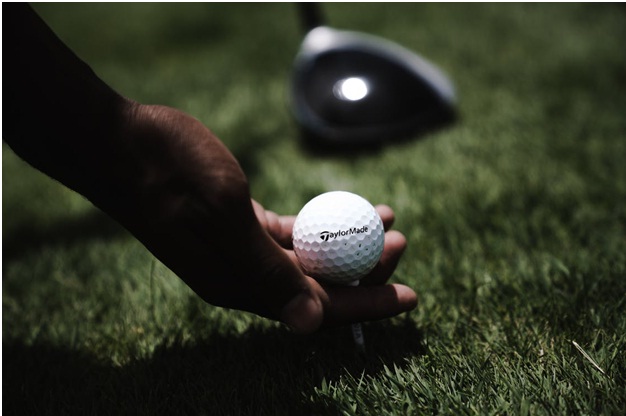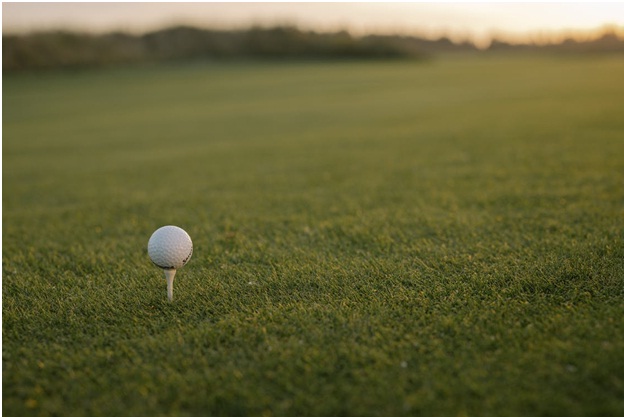How the Kick Point of the Best Driver Shafts Affects Ball Flight
Posted by Dallas Golf on 03 Jun 2021

The single most important aspect of developing proficiency in golf, or in any athletic pursuit whatsoever, is dedication. The amount of time you spend learning about your sport, practicing your technique, developing your form, and then reflecting on the lessons learned, at the range or on the course, are the most important investments you can make in your skill.
Despite the promises of marketers, the age-old adage rings true: practice makes perfect (or better, since no player is perfect). There is no magic shaft, grip, glove, ball, or clubhead that will make you or anyone an immaculate golfer.
However - and we can’t stress this enough - the gear you play will impact your proficiency. The gear you play with makes a huge impact on your performance can make the difference between an enjoyable game and a frustrating one, and can even be more impactful than this. The gear you play with will even go far enough to cause you to learn, or unlearn, bad habits.
Therefore, while practice is the key to betterment, you should never play or practice with equipment that does not suit your natural abilities as closely as possible. That is, when you’re playing, use the best gear for the job - for example, the best driver shafts.
A Note on the Individual
This being said, there is no single best golf shaft. Instead, there are a set number of suitable golf shafts for each player, given the club with which they will be paired, and the abilities and measurements of the player in question. It is a combination of measurements and abilities that will make a golf shaft suitable for a player - or not.
There is absolutely such a thing as a golf shaft that is well-matched to a player, as well as one that is poorly suited to his or her abilities. Don’t take this without a grain of context, because oftentimes issues associated with golf swings are explicitly the result of poor habits, form, or technique. However, there are a variety of problems that can arise due to a poorly matched golf shaft. Since golfers use drivers to drive golf balls long distances, sometimes these issues are most pronounced with a driver shaft.
Problems Associated with Poorly Matched Driver Shafts
The following are some problems that could be associated with a golf shaft for a driver that is poorly mated to your abilities as a player. If you have worked extensively on your form and still are plagued by any of the following problems, there is a good possibility that the issue may rest with your equipment, and not with you.
Look out for any of the following issues before pointing the finger at your driver’s shaft.
●You can’t place shots accurately
Issues with shot placement are some of the most common faced by golfers. At the very least, they are often the most noticeable and they impact the game significantly since if you can’t drive a ball accurately, you stand a far lesser chance of scoring at or under par. Accuracy problems can cause real issues for golfers.
There are many attributes of a golf shaft that can impact the accuracy of the shot. In some way or another, flex, kickpoint, shaft weight and length, balance and torque can all impact a player’s ability to place a ball where intended. Specifically, experienced players may be frustrated by the “whippiness” of more flexible shafts, and this can make issues associated with shaft flex problematic. Because of this, problems with accuracy alone can be hard to pinpoint to one aspect of a golf shaft.
●Reaching certain distances is frustratingly difficult or impossible

Shaft flex can be implicated directly in frustrating a player’s ability to reach a certain distance with their golf swing. This is because distance is directly related to the energy transfer that results from the speed of a swing. Players with slow swing speeds can be put off by stiffer shafts that don’t accommodate their abilities, whereas more flexible shafts can make it easier for some players to reach greater distances.
If you can’t reach the distances you would like to reach, there is a good chance that you are playing with a shaft that is too stiff for your swing speed. Of course, there are other attributes that can affect this, so seeking the advice of a professional trainer can help you get to the bottom of it.
●You keep hitting fat shots - or thin shots
A player is said to have hit a fat shot when the clubhead strikes the ground before making contact with the ball. This will result in a loss of overall distance as it will slow down the clubhead; it can also adversely affect accuracy. By contrast, a shot is said to be thin when the leading edge of the golfer’s clubhead strikes too far up on the side of the ball. This can also adversely affect distance and accuracy, and a thin shot will typically have a low trajectory.
Usually, these issues are attributable to one of two things: either to a golf shaft that is either too long or too short or to an issue associated with poor form or stature. However, it is important to be aware of this, as a shaft’s kick point can also cause problems associated with trajectory.
●You have a habit of hitting sky shots
A sky shot may present in a similar fashion to a fat shot, but these issues are not the same. With a sky shot, the club face actually does not make contact with the ground. Instead, in a sky shot, the club face strikes too low on the ball or seems to swipe the tee out from under it. This causes the ball to launch high into the air, sometimes nearly straight up in front of the golfer. Typically this issue is pronounced enough that it does not indicate a poorly matched kick point as a culprit.
●Problems with slices and fades
A slide is a type of shot in which the ball takes a curving trajectory, either to the right or the left of the intended flight path. A slice is often a dramatic curve, whereas a more muted version of a slice shot is a fade shot, in which the ball follows a gently curved trajectory. Either way, left or right, slice or fade, these are issues that need to be remedied.
A slice or a fade can be caused by a problem with the golfer’s form, wherein the clubface strikes the ball in an “open” or “closed” position - that is, at an angle rather than straight-on. This imparts spin to the ball, which causes it to curve in flight.
However, slices or fades can both be caused by a torque rating that is either too high or too low for a golfer. Torque, which is a measurement of how much a golf shaft rotates when stressed, such as during a swing, can impart undue spin to a ball. A professional trainer can help you uncover this.
●The ball flies too high or too low - this could be a problem associated with kick point
All of these issues bring us to problems with trajectory that cannot be explained away by any of the issues mentioned so far. There are times when all other factors can be ruled out and you can be fairly well assured that your form is near-perfect or at least very good, and you still are plagued by issues associated with trajectory.
If everything else seems to be in order, but your shots still seem to fly either too high or too low, you could be looking at an issue associated with kick point, which is an often-overlooked metric of even the best driver shafts.
Kick Point, A.K.A. Flex Point: It Matters
Kick point often takes a backseat to the overall stiffness rating of a golf shaft, but it’s significant enough in its own right that this should not be the case. Kick point, also known as flex point or bend point, is a slightly subjective assessment of how “high” or “low” on a shaft the shaft itself seems to bend.
A shaft’s kick point is generally regarded as either high, mid or low, but some ratings will be more specific, giving a kick point as “mid-high,” “mid-low” or otherwise. Where a shaft’s kick point lies will affect your swing in a variety of ways.
●High kick point: A shaft with a high kick point will seem to flex very high up on the shaft, near the grip. Sometimes, it is difficult to feel that a shaft has a high kick point, and the shaft itself might not seem to flex at all or feel like it is a one-piece, stiff shaft. However, high kick points can frustrate some golfers because a high kick point, all else being equal, can result in shots that have a very low trajectory. It is important not to rule out kick points as a feature if your shots fly too low because other issues can cause low-trajectory, such as thin shots. If your shots are not thin, but your trajectory is still low, it could be an issue arising from your shaft’s high kick point.
●Low kick point: Shafts with a low kick point may feel “whippier” or more flexible than shafts with high kick points, even if they have the same or similar stiffness ratings. Whereas a shaft with a high kick point can make your shots skim too low, a shaft with a low kick point can give your golf shots high, almost floating trajectories. A flexible shaft with a low kick point may be able to help golfers with slower swing speeds reach greater distances, but the higher trajectory will also subject the ball to greater wind resistance or even magnify other problems with the swing.
●Mid kick point: a shaft with a mid kick point will seem to flex right about at the midpoint. Unless your specific skill set as a player will require you to pursue a golf shaft with a high kick point to keep your shots low or a low kick point for extra distance, a mid-kick point should serve you well. Since many golf shafts have mid-kick points, this works well - but of course, you can always solicit the help of an experienced trainer for additional help.
What Else Affects Performance?
In addition to kick point, the following traits can and will also impact the performance of even the best driver shafts. Make sure you evaluate them before you outfit your driver with a new shaft, and call us for help if you’d like to learn more.

●Shaft flex
Shaft flex, which gives an impression of how much a shaft will bend during a swing, is one of that shaft’s most important features. Generally speaking, more flexible shafts are better for players with slower swing speeds and stiffer shafts are more suitable for more experienced players with higher swing speeds.
●Shaft torque
Torque is a measurement of how much a golf shaft will rotate around its center axis, or “twist,” for lack of a better word. Improperly matched torque ratings can cause problems with fading and slicing.
●Length and weight
A shaft’s length and weight will also impact a player’s form and swing speed, which will both directly affect ball flight, distance and accuracy.
●Material: This will affect all of these
Most golf shafts today are made from graphite or composite materials, which can be made very light and very flexible. However, some of the stiffest, heaviest shafts are made from steel, which, in the hands of an experienced player, can be very effective.
How Dallas Golf Can Help
If you’re interested in learning more about how kick point can impact your golf swing and cause problems that you might otherwise think would be caused by improper form, get in touch with us at 800-955-9550 and we’ll fill you in. We can help you identify the cause of swing issues and help you rectify them, and if you come in to visit us, you can interact with our best driver shafts in person or even take advantage of our professional golf club fitting services.
